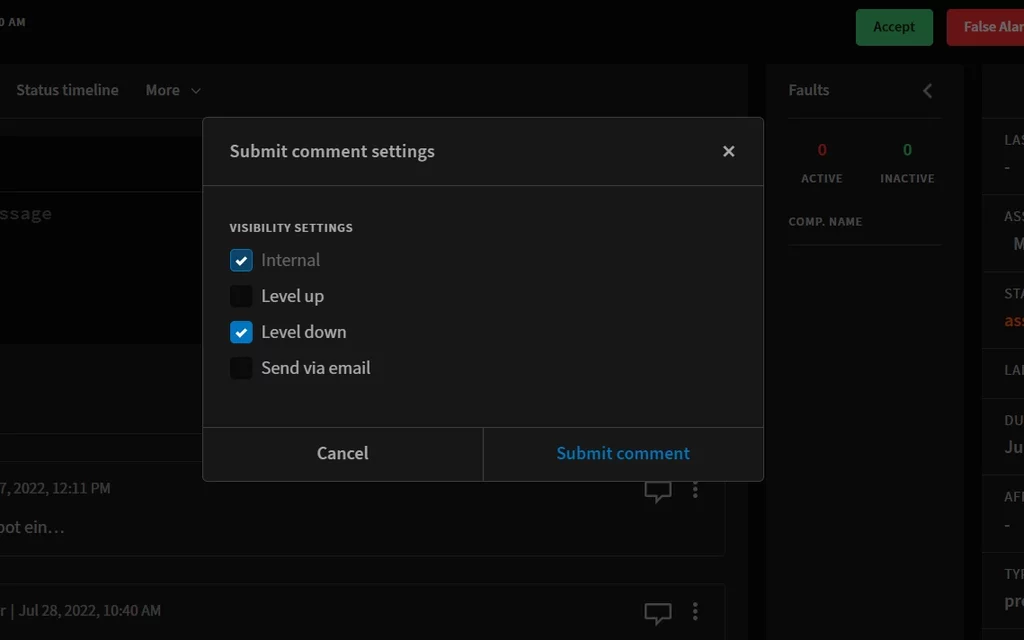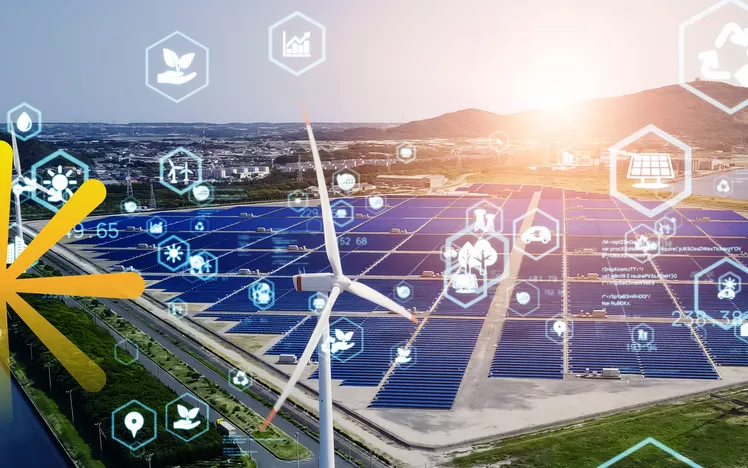
The multi-level smart ticket system (MLS) is one of four main components that enable raicoon autonomous operations center (AOC) to run, well — autonomously.
raicoon AOC takes care of the “operations” portion of “operations and maintenance.” In other words, the tasks typically performed by a traditional operations center are automated completely. However, there is still a need for maintenance when faults do arise. The MLS is how the AOC communicates to solar asset managers and technicians when maintenance is required.
We get a lot of questions about how the ticket system works. So without further ado:
raicoon multi-level smart ticket system — What is it?
The MLS is the interface through which the AOC platform communicates when maintenance is required. It also serves as a communication tool through which service providers can exchange information. This streamlines workflows by removing the need for back-and-forth communication between onsite technicians and control room operators.

How the multi-level smart ticket system works
When the AOC’s fault detection engine finds a fault and determines it to be real and actionable, it signals to the system to create a ticket. That ticket is then assigned to the appropriate person to resolve the issue.
There are five factors that contribute to a smooth workflow with raicoon’s multi-level smart ticket system:
Role assignment
raicoon’s ticket system was created to facilitate the needs of everyone in the service chain. To make sure this happens, roles are assigned in a hierarchical manner: supervisors, asset managers, and technicians or subcontractors.
Ticket assignment
When a ticket is created, it is automatically assigned down the hierarchy, or chain of custody. It first goes to the plant owner or supervisor, and then it’s passed down through the asset manager, and finally, to the responsible field technician or subcontractor in the auto-assignee chain.
Issue resolution
The last person in the auto-assignee chain (usually the field technician of a subcontractor) is the person responsible for resolving the ticket. If they accept and resolve the ticket, the process ends there.'
Ticket escalation
In the case that the technician cannot or does not accept the assignment, the ticket is escalated one level up, i.e., the asset manager. They then decide whether to resolve the ticket themselves or reassign it.
Supervision and visibility
Involvement is required only by those who are assigned a role in the auto-assignee chain. The last person in the chain is the one who is actually responsible to work on the ticket — and they will get the corresponding information to go onsite and fix it. Everyone above them in the chain of custody is able to see the ticket, but they need not be involved unless a ticket escalates back up to their level.
Essentially, role assignment defines who will be kept in the loop — so you can add regional managers, team leads, etc. without including them in the auto-assignee chain. This way they can see where tickets are in the system, but they bear no responsibility for them.
Supervisors can also decide when they want to be alerted. For example, it’s unlikely that as a supervisor, you’d want to be alerted each time an inverter goes down. As such, you can configure alerts to your liking in the notification center on your AOC dashboard.
The features that pull it all together
The ticket system also serves as a communication tool for service providers.
We went above and beyond to make sure the MLS is as easy to use as possible. Solar technicians have enough on their plate — which is why we didn’t want them to have to fill out tons of forms or jump through hoops to make the smart ticket system work for them. This is important because in order for the AOC to function as it should, the MLS must be used. This way, information about response times can be collected and used so the AOC can continue to learn, and service quality can be optimized.
Inter vs intra-org communications
The right balance between transparent information and intra-organization privacy is a key element of the MLS. To receive maximum value from the AOC, it’s important that information about fault details, ticket status, etc. is transparent and available. This means that everybody in the service chain must use the system.
This is why we created a “multi-level” system — we understand that organizations need a certain amount of privacy when it comes to internal information. The MLS was developed so that all participants in the service chain are able to share with ease the information the system needs to run optimally, while still being able to decide what information should stay private within their own organization.
Here’s how it works: Users are able to leave comments within each individual ticket. This function can be used to upload files or photos, exchange information with colleagues, or request help. When leaving a comment, you can choose whether that comment is visible to only your organization, your subcontractor, one level up, or all of the above.

This way, O&M service providers can communicate with one another without fear of “saying the wrong thing,” or having the boss of their boss’s boss read their messages and question their internal practices. Basically, the system enables subcontractors to do what they need to do with the privacy they desire, while still providing solar asset managers with access to the information they need — such as response times and impact on PV plant performance.
Simple to use
To acknowledge and respond to an alert, all technicians need to do is press a prominent red or green button at the top of the ticket. For example, if they want to accept a ticket they’ll click the green “Accept” button at the top of their screen, and make a note of when they’ll be onsite to address the issue.
The next logical step for an accepted ticket is then auto-updated and reflected on the buttons at the top of the screen. The system is simple, straightforward, and accessible by any device — no extra workload for technicians.
Detailed with information
Each ticket includes information about:
Live status
If the status of a fault changes, the technician can see that change reflected in their assigned ticket. This way there is no time lost trying to attend to an error with outdated data. Each ticket features live-updated information and a detailed history of all activities related to the fault.
Associated losses
Supervisors and solar asset managers can click on any individual ticket to see the impact the issue is having on their PV systems. They can also see whether the ticket is in progress, on hold, etc.
Data transmission times
Technicians no longer need to wait around for information from an operations center to know when the next data transmission will happen. That information is readily accessible in the ticket.
Documentation and information from previous technicians
This can include photos, information about the layout of the site, door codes, etc. Technicians are able to make a note of these things within the ticket for future visits, streamlining maintenance workflows.
There is also the option to add files to be present at a plant by default. This is handy in countries where health and safety documentation is required for any workload order — this way the person getting the ticket (or “workload”) has access to that documentation from within any ticket.
A “passive” system
The logic behind the system is that so long as the people responsible for attending to errors react to ticket requests and do their job as it’s outlined in their Service Level Agreements (SLAs), asset managers and supervisors don’t need to be involved in the process at all. The MLS makes it so that managers only need to jump in if something goes wrong — rather than trying to actively monitor and manage every action that happens onsite.
Field technicians don’t need to monitor at all (the PV plants, nor the AOC dashboard). Instead, they can concentrate on whatever their activity at hand is — the system will actively notify them if a new ticket is assigned.

We’re quite proud of having created a ticket system that truly facilitates the needs of everyone in the service chain. With it, you really can “Sit back and let AI do the work.”
raicoon is making solar asset management a more sustainable and profitable endeavor by increasing energy yield of PV plants by ~6% with autonomous operations. Book a demo with our team to learn more.
You might also be interested in

raicoon autonomous operations center: boosting solar efficiency with adaptive certainty thresholds

Critical fire risks in solar panels – Ensuring safety on your rooftop

Driving solar innovation with workforce upskilling

Boosting solar system efficiency with diagnostic analytics

